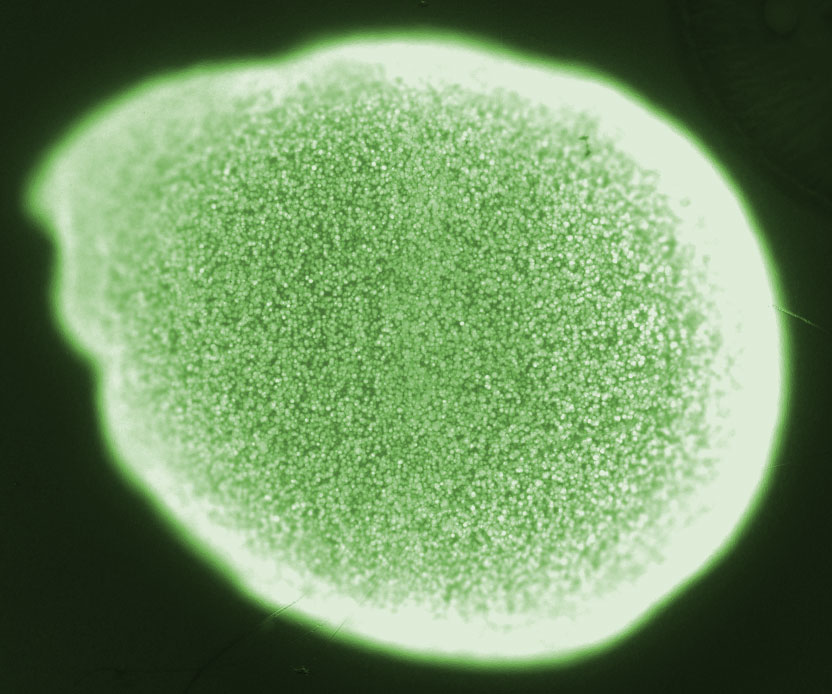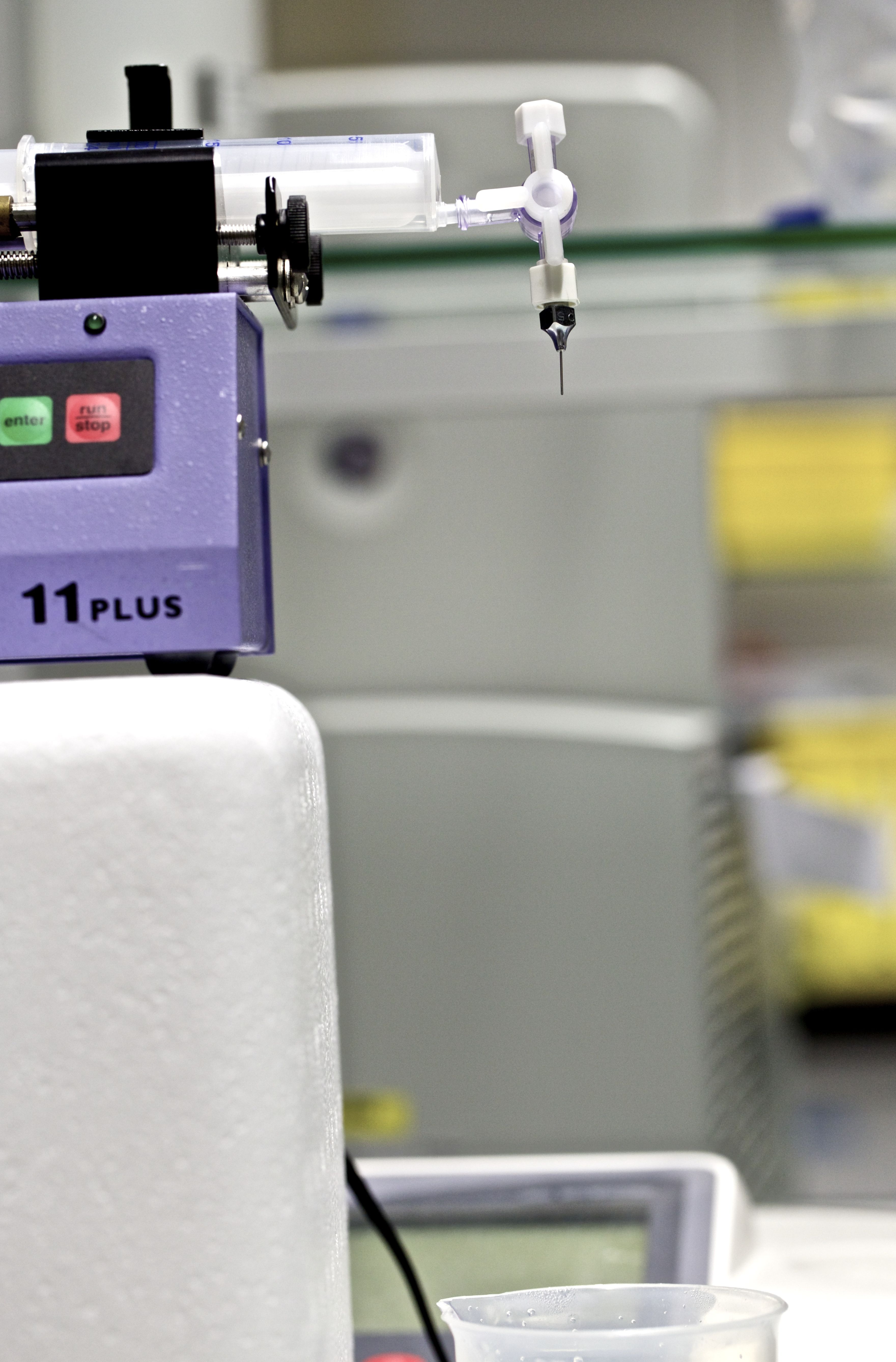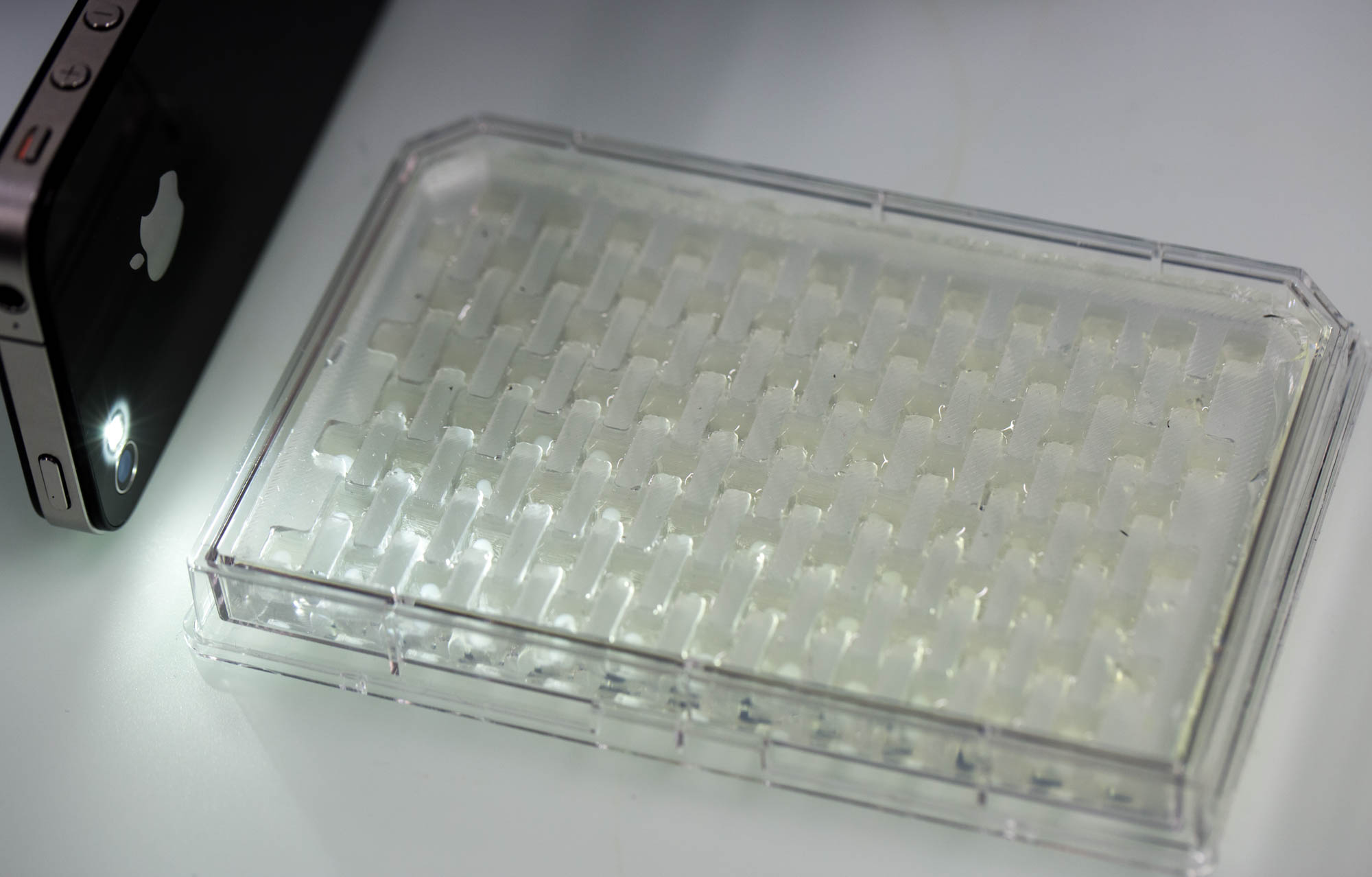Team:ETH Zurich/lab/bead
From 2014.igem.org
(→Overview) |
(→Properties) |
||
| Line 17: | Line 17: | ||
{| | {| | ||
| - | [[File:ETH2014_BeadColonies.jpg|right|300px|thumb| The green spots are ''E. coli'' colonies inside an alginate bead]] | + | [[File:ETH2014_BeadColonies.jpg|right|300px|thumb| '''Figure 2 The green spots are ''E. coli'' colonies inside an alginate bead''']] |
Na<sup>2+</sup> alginate is a viscous liquid, however, upon addition multivalent ions such as Ca<sup>2+</sup> cross-linking of the polysaccharides occurs. Thus gelling of alginate can be achieved by the addition of a Ca<sup>2+</sup>. For encapsulation the cells or macromolecules are added to Na<sup>2+</sup> alginate and subsequently immobilized during the gelling process. In fact, the encapsulation process is mild and compatible with most living cells. The high porosity of the ionically cross-linked polysaccharide lattice allows diffusion of nutrients and other substances into and out of the bead. This property of Ca<sup>2+</sup> alginate allows cultivation of bacteria inside beads and does not prevent communication via small molecules between colonies of different beads. Substances such as phosphate or EDTA are sequestrating Ca<sup>2+</sup> and thus destabilizing the alginate gel<sup>[[Team:ETH_Zurich/project/references#refEmergence|[25]]]</sup>. This fact should be considered when choosing the cultivation medium. | Na<sup>2+</sup> alginate is a viscous liquid, however, upon addition multivalent ions such as Ca<sup>2+</sup> cross-linking of the polysaccharides occurs. Thus gelling of alginate can be achieved by the addition of a Ca<sup>2+</sup>. For encapsulation the cells or macromolecules are added to Na<sup>2+</sup> alginate and subsequently immobilized during the gelling process. In fact, the encapsulation process is mild and compatible with most living cells. The high porosity of the ionically cross-linked polysaccharide lattice allows diffusion of nutrients and other substances into and out of the bead. This property of Ca<sup>2+</sup> alginate allows cultivation of bacteria inside beads and does not prevent communication via small molecules between colonies of different beads. Substances such as phosphate or EDTA are sequestrating Ca<sup>2+</sup> and thus destabilizing the alginate gel<sup>[[Team:ETH_Zurich/project/references#refEmergence|[25]]]</sup>. This fact should be considered when choosing the cultivation medium. | ||
|} | |} | ||
Revision as of 23:25, 17 October 2014
Beads
Overview
Properties
Production
Loading the Chip
 "
"

















